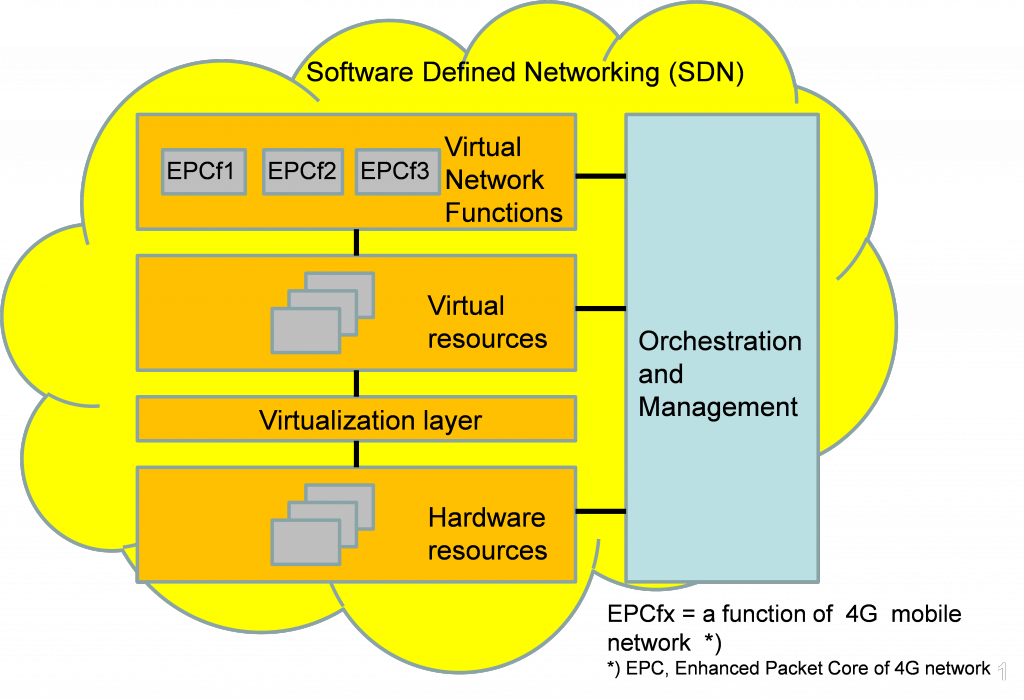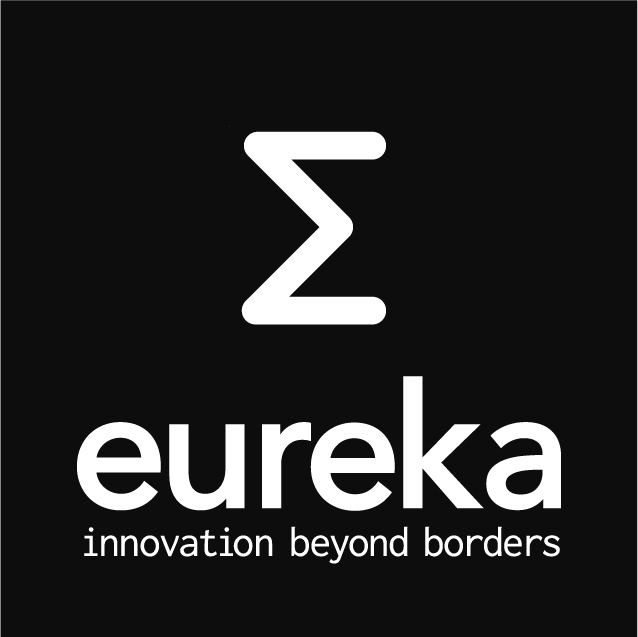SIGMONA – SDN Concept in Generalized Mobile Network Architectures
Mobile operator challenges
Traffic volumes in mobile networks are increasing and end-user needs are changing rapidly. Mobile network operators need more flexibility, lower network operating costs, faster service roll-out cycles and new revenue sources. One answer to this tough call is the combination of software-defined networking (SDN) and network functions virtualization (NFV). The first means the separation of the control plane from the data plane in networking equipment. The latter refers to executing the control and management plane functions in virtual machines using cloud computing to support the execution.
Virtual mobile networks with software defined networking in cloud
The project integrated the concepts of SDN and NFV into LTE mobile networks with specific focus on flexible end-to-end SDN/NFV architecture, efficient backhaul network, optimized mobility management, dynamic resource management and improved security. Cloud computing platforms and open source software are emerging in the mobile networks with SDN and NFV. These technologies will be applied in the 4G/LTE networks, and they will further evolve to the forthcoming 5G networks.

Figure 1: Software Defined Mobile Network concept with virtual resources and SDN.
Conclusions
SDN/NFV improves the flexibility of resource allocation on demand in mobile networks in terms of 1) transport resources following the movements of crowds of users, and 2) services. Examples of new services are flexible caching in an optimal location, flexible service chaining and scaling the computing, memory and network capacity. As a result the responsiveness of the mobile network to user demand can be improved.
SDN/NFV allows better implementation of many existing network functions using location optimization and virtualization. Data collection from virtual functions is easy.
For operators, the exploitation of the new network technologies includes also capital and operational expenditure benefits due to the more efficient network operation. In addition, SDN/NFV may change the conditions for competition of incumbent, challenger, mobile virtual network operators and service providers. SDN/NFV enables: 1) decoupling supplier’s hardware and software business models, 2) new software-only suppliers without telco legacy, 3) opening up new opportunities for software integrators, 4) changing the time-to-market of new functionalities, and 5) easier market access by new entrants and higher competition.
The high-level SIGMONA architecture considers three possibilities for placing the controller in the LTE network, which would move the control plane functionalities into centralized servers. The approaches support the gradual introduction of SDN into live networks providing high network throughputs, optimal flow management and traffic engineering possibilities.
Exploitation
SIGMONA’s results provide new business opportunities in the form of several new or improved products for the virtualized 4G/LTE networks.
Standardization contributions were provided to ETSI Industry Specification Group NFV, including a proof-of-concept system implementation. Open Source software was submitted to OpenStack cloud platform.
The project implemented proofs-of-concept and test systems. Co-operation took place both nationally and between two countries to implement joint, national test systems/networks.
The project has been able to demonstrate test systems in the major mobile conferences, the most high profile of those being the Mobile World Congress 2015 and 2016.
A very high number of publications and conference presentations highlight the academic qualifications of the project work. One Best Paper Award at 9th International Conference on Next Generation Mobile Applications, Services and Technologies (NGMAST 2015), Cambridge, UK, Sept 2015 with the paper “Security for Future Software Defined Mobile Networks” by Univ. of Oulu/Finland, Aalto/Finland, Montimage/France, Nextel/Spain, Innovalia/Spain, Eneo/Spain was received. A book on the Software Defined Mobile Networks (SDMN) was edited and published by Wiley largely based on the work and contributions by the project partners.
A White Paper was made to summarize the key results of the project for internal and external stakeholders.
Project web site: https://www.celticnext.eu/project-sigmona/
Public project web site: www.sigmona.org
Project video: sigmona on celtic youtube channel




